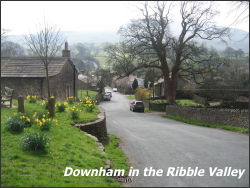Long Tailed Tits and Health and Safety!

At last after last weeks windy weather the 31st March dawned calm and sunny – perfect for filming Long Tailed Tits gathering feathers and taking them into their nests. To save time I provide the feathers for them. Now where do you obtain feathers at this time of the year with no birds in moult – the answer of course is to purchase a feather duster from the Garden Center with plenty of white feathers on it (they prefer white feathers). I received some funny looks from the check out girl when I informed her that the feather duster was not going to be used for dusting purposes. I left her guessing as to its use.
At the first site the pair picked up the offered feathers and provided me with some good film. However the nest was deep in gorse and I could not film them taking the feathers into the hole so I moved on to the Industrial estate where there was a more open nest site. The gorse bush was on the edge of a busy unit with lorries coming and going. I had no cover on the grass embankment so I climbed under my camouflage cloth and got ready to film. Unfortunately a gallery of yellow jacketed workers had gathered to watch. One was nominated to come and ask the question of what I was doing. A suitable explanation was given and all seemed well and I got on with filming. However, after ten minutes, a man in an orange jacket appeared and pointed out I was technically on their property and not covered by Health and Safety if a lorry was to mount the grass verge and hit me!! After some discussion a piece of paper was produced and I signed a disclaimer releasing their company from liability.
A visit to Downham in the Ribble valley produced the first Sand Martins of Spring. There were some splendid spreads of Wood Anemones and Lesser Celandines but on the whole this years flowers are much later than last year. In the hills the first male Merlin was back on breeding territory on the 31st March.
The highlight of the week was a visit to Bowland and the inspection of three Crossbills nests that contained eggs and young. After a life time involved in nest finding it was hard to believe how high in the pines and how well hidden these nests were.

